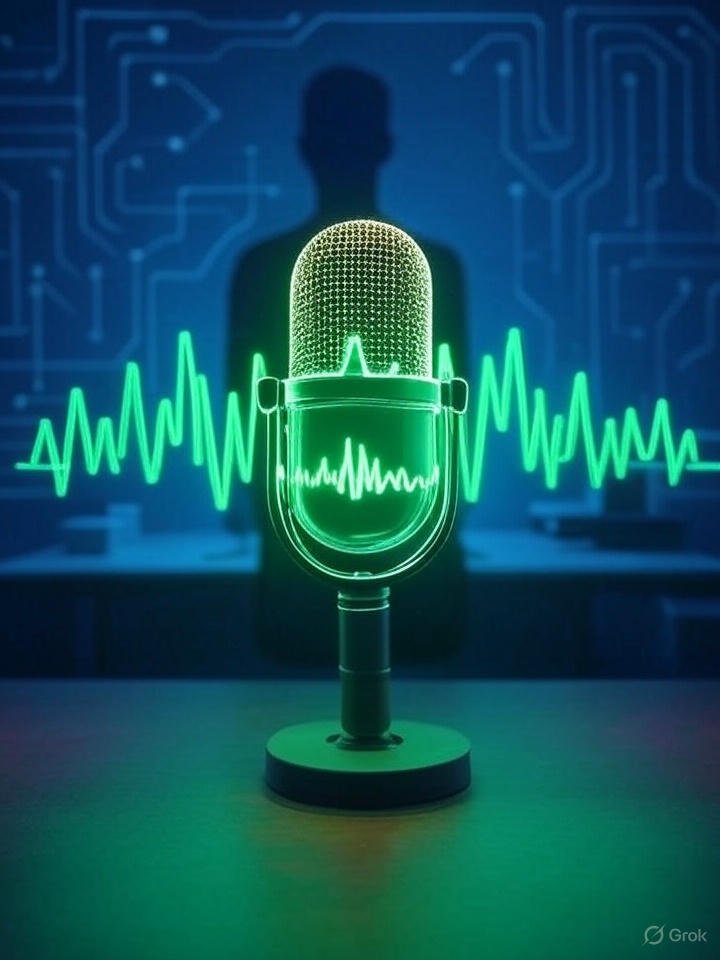Voice cloning is rapidly becoming one of the most exciting and innovative applications of artificial intelligence. It allows users to generate lifelike replicas of human voices with minimal input—just a few minutes of recorded speech. Whether you’re a content creator, marketer, educator, or simply someone who wants to preserve a loved one’s voice, voice cloning technology opens new doors to creativity and communication.
Table of Contents
Want to turn your text into stunning videos in minutes? Try the AI tool I use: Click here to explore Fliki
Here’s a youtube video I made of my own voice (Yes it is MY ACTUAL CLONED AI VOICE)
The Rise of Voice Cloning Technology
At its core, voice cloning involves using deep learning algorithms to replicate a person’s voice in a digital format. This technology has advanced rapidly, making it possible to generate synthetic voices that are nearly indistinguishable from real human speech. From personalized podcast narration to AI-generated audio books and marketing campaigns, voice cloning enables a wide range of creative and professional uses.
What makes voice cloning particularly powerful is its flexibility. It can replicate voices in multiple languages and accents, support emotional nuances, and be integrated into text-to-speech systems for seamless user experiences. As a result, businesses are using it to enhance customer interactions, while artists and developers use it to produce engaging multimedia content. However, as with any powerful tool, ethical considerations such as consent and intellectual property rights are essential to prevent misuse.
Getting Started with Voice Cloning Tools
The journey to creating your own voice clone begins with a good-quality audio sample. Clear, high-fidelity recordings are vital to help the AI accurately understand and replicate your voice. Many platforms offer detailed guides to help you record optimal samples, suggesting the use of quiet environments and quality microphones.
Once your audio is uploaded, the system processes the data using deep learning models, often providing rapid feedback. Some platforms allow you to hear your cloned voice in just a few minutes, giving you the chance to tweak pitch, tone, and speaking speed. This level of customization ensures the final product aligns with your goals, whether it’s to sound formal, conversational, or expressive.
More advanced tools even let you clone other voices or experiment with different personas. This is ideal for creators who want multiple character voices in one project or businesses looking to tailor voiceovers for different regions and demographics.
Features and Benefits of Voice Cloning
One of the main draws of voice cloning is how quickly and efficiently it allows users to generate realistic audio content. Within minutes, you can produce high-quality voiceovers for videos, podcasts, e-learning courses, and advertisements. These voices can be customized in terms of language, tone, and emotion, ensuring that your content resonates with your target audience.
Beyond content creation, voice cloning also supports brand consistency by allowing companies to maintain the same voice across multiple platforms and campaigns. AI-generated voices are available around the clock, can be edited instantly, and don’t require expensive studio sessions. The ability to choose from a range of voice models or create your own synthetic voice opens the door to more personalized and engaging experiences.
Real-World Applications of Voice Cloning
Voice cloning’s use cases are as broad as they are impactful. In entertainment, it breathes life into characters for video games, animations, and interactive stories. In marketing, it allows companies to create familiar and friendly voices for ad campaigns, IVR systems, and virtual assistants.
Voice cloning can also play an emotional role. For example, individuals have used this technology to recreate the voices of deceased loved ones for memorial messages or to share stories with future generations. In education, AI voices can read aloud textbooks, explain lessons, and interact with students in an engaging and accessible manner.
The music industry, too, is experimenting with cloned voices to create new vocal effects or produce songs in different vocal styles. The possibilities are only limited by imagination.
How Voice Cloning Technology Works
Voice cloning relies on neural networks and advanced speech synthesis technologies. These systems are trained on large datasets to learn the intricacies of speech—pitch, tone, pacing, inflection—and then apply this knowledge to mimic a specific voice from a smaller sample. Once trained, the model can reproduce new speech in that voice, even from simple text input.
The most effective clones come from high-quality audio samples. Clarity and consistency are critical, and even small amounts of background noise can affect the final product. Once the model is built, users can further refine the voice by adjusting variables such as pitch, speed, or expressiveness.
Custom voice cloning offers even more precision, allowing users to create a synthetic voice that mirrors the unique qualities of the original speaker. This process usually requires additional training time but results in a remarkably lifelike output.
Practical Use Cases
Voice cloning can significantly streamline the creation of voiceovers for various content types, including videos, podcasts, audiobooks, and public presentations. With a cloned voice, you can generate hours of narration without ever stepping into a recording booth.
In business, voice cloning enhances presentations, sales videos, and employee training modules. Customer service departments can use personalized synthetic voices for automated phone systems, creating a more human touch. For accessibility, voice cloning empowers individuals with speech impairments to communicate using a digital version of their own voice.
In the creative arts, writers and audio producers can develop multi-character voice dramas, while musicians can add layers of vocal expression to their compositions. Whether it’s functional, emotional, or imaginative, voice cloning is transforming the audio landscape.
Voice Cloning for Professional Use
Professional-grade voice cloning services are tailored for commercial applications. These providers use more sophisticated AI models to deliver extremely accurate and natural-sounding voice replicas. For voice actors, this means expanding into new languages and roles. For content creators, it means producing consistent, high-quality audio at scale.
Businesses benefit from custom branding through synthetic voices, whether it’s for training materials, advertising, or social media content. With localization tools, these voices can be adapted for different cultures and markets, making global expansion easier without sacrificing tone or clarity.
Professional services also include dedicated support teams who help ensure audio files are secure, compliant with intellectual property laws, and optimized for specific uses. From marketing campaigns to instructional videos, the results are polished, personalized, and scalable.
Real-Time Voice Cloning APIs
Real-time APIs take voice cloning a step further, enabling seamless integration into apps, devices, and platforms. Developers can embed voice cloning into chatbots, virtual assistants, voice-controlled apps, and more, enhancing user experience through dynamic, personalized audio responses.
These APIs come with SDKs for major platforms and offer tools to fine-tune the cloned voice’s pitch, tone, and speed in real time. They support scalable, cloud-based solutions with low latency, making them ideal for customer-facing applications.
With built-in security measures, these APIs ensure user data is protected and that voice cloning is used ethically. From real-time storytelling to accessible communication for users with disabilities, the API layer makes voice cloning more versatile and impactful.
Voice Cloning for Special Occasions
Voice cloning can also be used for deeply personal moments. Imagine sending a birthday message in your own voice—even if you’re halfway across the world—or recreating a heartfelt letter spoken in a loved one’s voice. These touches make special occasions even more meaningful.
For memorials, cloned voices can preserve the sound and speech patterns of those who’ve passed, keeping their memory alive in audio form. The emotional impact of hearing a familiar voice say something new is profound and can create lasting memories for families and friends.
The Future of Voice Cloning
Voice cloning is changing the way we produce and consume audio. With powerful tools available to professionals and amateurs alike, creating personalized, lifelike voices has never been easier. As the technology continues to evolve, expect even more realistic results, greater creative freedom, and expanded opportunities across industries.
Whether you’re a developer building the next voice-enabled app, a content creator looking for more flexibility, or someone wanting to preserve a meaningful voice, voice cloning offers the tools to bring your ideas—and your voice—to life.



